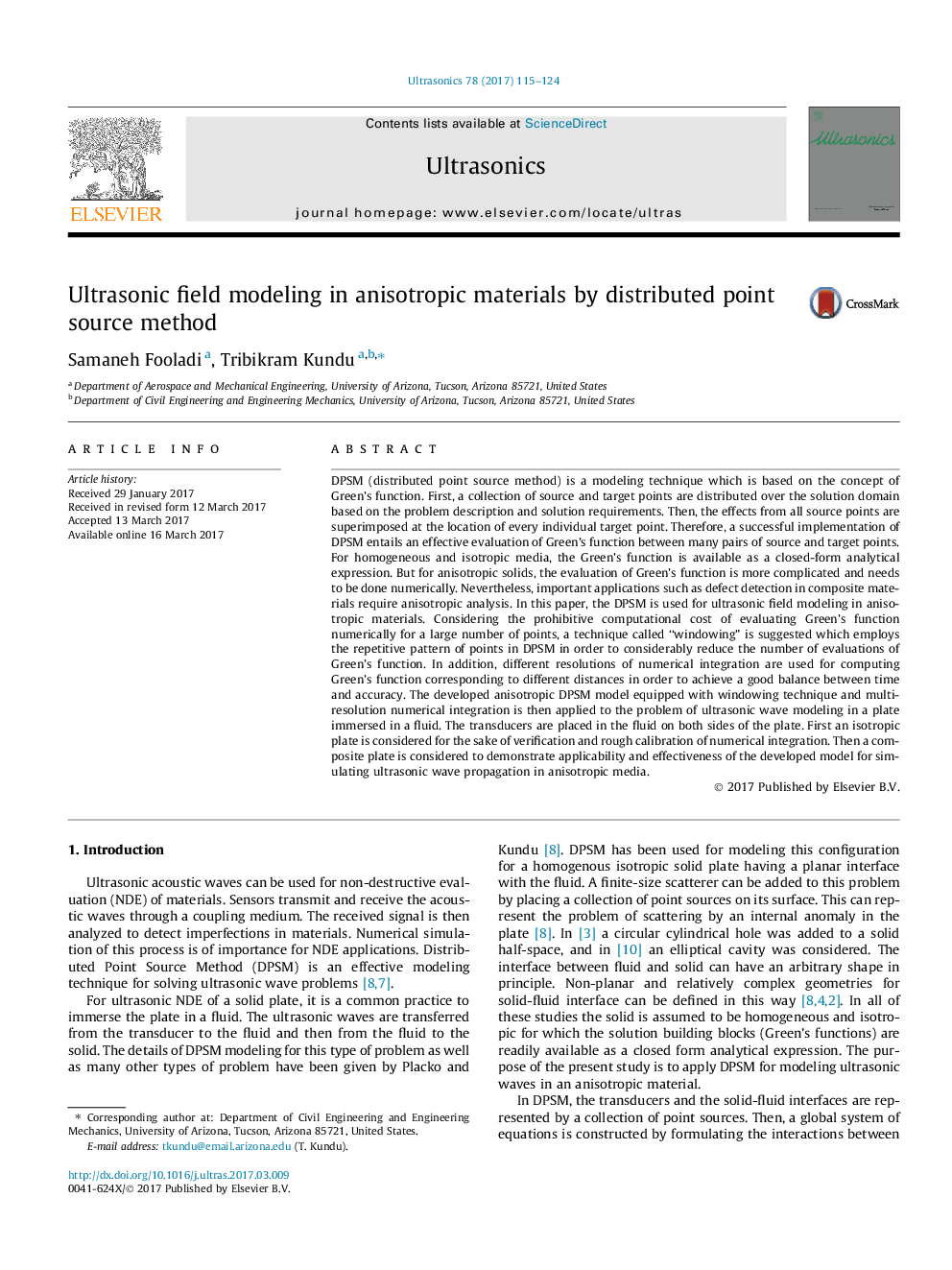| کد مقاله | کد نشریه | سال انتشار | مقاله انگلیسی | نسخه تمام متن |
|---|---|---|---|---|
| 5485451 | 1523191 | 2017 | 10 صفحه PDF | دانلود رایگان |
عنوان انگلیسی مقاله ISI
Ultrasonic field modeling in anisotropic materials by distributed point source method
ترجمه فارسی عنوان
مدل سازی میدان التراسونیک در مواد بی اثر با روش منبع توزیع شده
دانلود مقاله + سفارش ترجمه
دانلود مقاله ISI انگلیسی
رایگان برای ایرانیان
موضوعات مرتبط
مهندسی و علوم پایه
فیزیک و نجوم
آکوستیک و فرا صوت
چکیده انگلیسی
DPSM (distributed point source method) is a modeling technique which is based on the concept of Green's function. First, a collection of source and target points are distributed over the solution domain based on the problem description and solution requirements. Then, the effects from all source points are superimposed at the location of every individual target point. Therefore, a successful implementation of DPSM entails an effective evaluation of Green's function between many pairs of source and target points. For homogeneous and isotropic media, the Green's function is available as a closed-form analytical expression. But for anisotropic solids, the evaluation of Green's function is more complicated and needs to be done numerically. Nevertheless, important applications such as defect detection in composite materials require anisotropic analysis. In this paper, the DPSM is used for ultrasonic field modeling in anisotropic materials. Considering the prohibitive computational cost of evaluating Green's function numerically for a large number of points, a technique called “windowing” is suggested which employs the repetitive pattern of points in DPSM in order to considerably reduce the number of evaluations of Green's function. In addition, different resolutions of numerical integration are used for computing Green's function corresponding to different distances in order to achieve a good balance between time and accuracy. The developed anisotropic DPSM model equipped with windowing technique and multi-resolution numerical integration is then applied to the problem of ultrasonic wave modeling in a plate immersed in a fluid. The transducers are placed in the fluid on both sides of the plate. First an isotropic plate is considered for the sake of verification and rough calibration of numerical integration. Then a composite plate is considered to demonstrate applicability and effectiveness of the developed model for simulating ultrasonic wave propagation in anisotropic media.
ناشر
Database: Elsevier - ScienceDirect (ساینس دایرکت)
Journal: Ultrasonics - Volume 78, July 2017, Pages 115-124
Journal: Ultrasonics - Volume 78, July 2017, Pages 115-124
نویسندگان
Samaneh Fooladi, Tribikram Kundu,
